On the 65th anniversary of promulgation of the Constitution, there’s little awareness within the smug middle class and academia of the extent to which mass illiteracy and sub-standard public primary and secondary education have impacted daily lives and endangered the future of the Republic Dilip Thakore
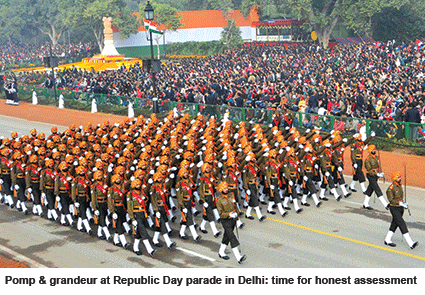 For right-thinking citizens who find the time to make an honest assessment of the state of the Republic, the 65th anniversary of the Constitution of India which falls on January 26, is likely to be a sombre occasion. Intensively debated for almost three years by the Constituent Assembly comprising the finest legal minds and intellectuals of newly independent India, the Constitution of India is arguably the most idealistic and noble charter of national governance, which drew upon the best features of the American and French among other national constitutions. Since then, against all expectations, it has enabled the survival of India which became independent after almost two centuries of British rule on August 15, 1947, as a functional constitutional democracy.
For right-thinking citizens who find the time to make an honest assessment of the state of the Republic, the 65th anniversary of the Constitution of India which falls on January 26, is likely to be a sombre occasion. Intensively debated for almost three years by the Constituent Assembly comprising the finest legal minds and intellectuals of newly independent India, the Constitution of India is arguably the most idealistic and noble charter of national governance, which drew upon the best features of the American and French among other national constitutions. Since then, against all expectations, it has enabled the survival of India which became independent after almost two centuries of British rule on August 15, 1947, as a functional constitutional democracy.
The preamble of the Constitution was carefully drafted by master spirits of the age led by Dr. B.R. Ambedkar, who despite his degrees from Bombay and Columbia (USA) universities had suffered humiliating caste and social discrimination for being born into a Dalit household. Therefore he ensured that under the Constitution all citizens of the free, independent Republic would enjoy justice, liberty, equality and fraternity and a social order in which minorities would be protected by guaranteed fundamental rights beyond the amending rights of ephemeral parliamentary majorities. Among them: freedom of speech and expression, to conduct any legitimate business, trade, profession or occupation in any part of India, to form political parties, associations and trade unions, among other ‘seven freedoms’ specified in Article 19. Moreover Article 14 unequivocally stated that all citizens without exception are equal before the law.
Although the eminent British constitutional law jurist Sir Ivor Jennings described it as “a lawyers’ paradise”, the architecture, detail and balance of the Constitution of India was — and continues to be — widely admired in India and abroad. The American scholar Granville Austin (1927-2014), author of two authoritative commentaries on the Constitution of India (The Indian Constitution: Cornerstone of a Nation (1966) and Working a Democratic Constitution: The Indian Experience (1999)), described it “as the greatest political venture since that originated in Philadelphia in 1787” when the US constitution was promulgated. According to Austin, the successful drafting of the Constitution of India was “a gigantic step for a people previously committed to irrational means of achieving other worldly goals”.
Nevertheless although as chairman of the drafting committee, Dr. Ambedkar was satisfied with the task the Constituent Assembly had accomplished, he warned that the Constitution was a mere roadmap for fair, firm and orderly governance of an unprecedentedly diverse nation state. As recounted in Ramachandra Guha’s authoritative India After Gandhi (2007), Ambedkar predicted that after the country formally adopted the Constitution on January 26, 1950, it would “enter a life of contradictions”.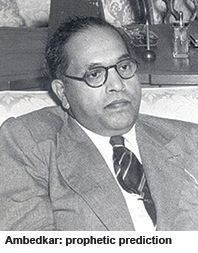
“In politics we will have equality and in social and economic life we will have inequality. In politics we will be recognising the principle of one man one vote, and one vote one value. In our social and economic life we shall by reason of our social and economic structure, continue to deny the principle of one man one value. How long shall we continue to live this life of contradictions? How long shall we continue to deny equality in our social and economic life? If we continue to deny it for long, we will do so only by putting our political democracy in peril,” he said prophetically.
Sixty-five years of muddling through after the adoption of the Constitution, it’s plain that Ambedkar’s worst fears have been realised. Far from being reduced, social and economic inequalities have increased, and Indian democracy is indeed in peril. Every promise made to the people of India in the preamble is under severe threat, if not already broken beyond repair.
The promise of justice is buried under the mountainous backlog of 30 million cases pending in the country’s crumbling, too-few and chaotic courtrooms. And far from being institutions of refuge and remedy for citizens, the courts inhabited by rapacious lawyers, openly corrupt officials and time-agnostic judges, are fearful places in which citizens dread the prospect of being ensnared in the serpentine coils of an iniquitous justice system.
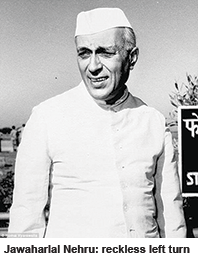 Likewise, liberty is an endangered ideal with crooked cops, bloodthirsty mobs and ill-informed vigilantes assaulting and threatening writers and intellectuals across the country. Ditto the ideal of equality with the gap between the rich — particularly the crooked rich — and poor widening rapidly. According to official data publicised and defended by the Planning Commission in 2013, the number of poor countrywide have been reduced by over 300 million since the Indian economy was liberalised (by the same actors who had shackled it for over four decades) in 1991. But this seemingly impressive statistic was clouded when it became clear that an individual with a daily income above Rs.32 per day ($0.50), to pay for food, clothing, shelter, education and health, is classified as non-poor.
Likewise, liberty is an endangered ideal with crooked cops, bloodthirsty mobs and ill-informed vigilantes assaulting and threatening writers and intellectuals across the country. Ditto the ideal of equality with the gap between the rich — particularly the crooked rich — and poor widening rapidly. According to official data publicised and defended by the Planning Commission in 2013, the number of poor countrywide have been reduced by over 300 million since the Indian economy was liberalised (by the same actors who had shackled it for over four decades) in 1991. But this seemingly impressive statistic was clouded when it became clear that an individual with a daily income above Rs.32 per day ($0.50), to pay for food, clothing, shelter, education and health, is classified as non-poor.
In the circumstances the fourth ideal set out in the preamble of the Constitution — fraternity — has become a fading dream. In 1984 over 3,000 innocent Sikh citizens were massacred under the nose of the Congress-led Central government in Delhi, after prime minister Indira Gandhi was assassinated by two Sikh bodyguards. In 2002, more than 2,000 Muslim citizens were killed in a pogrom in Gujarat under the indulgent watch of then BJP chief minister Narendra Modi, who was overwhelmingly elected prime minister of the country in 2014. And in 2013 over 42 Muslim innocents were killed and 219 families displaced from their homes in the Muzzafarnagar riots under the watch of the Samajwadi Party which swept to power in Uttar Pradesh, India’s most populous state (200 million) in 2012.
 Last September, a Muslim citizen was killed by an irate mob of Hindu fanatics on the charge of storing beef (prohibited in Hindu scriptures) in his refrigerator at home. Under the country’s imperfect first-past-the- post electoral system, it’s possible for a parliamentary/legislative assembly candidate to win a constituency with as little as 25 percent of the votes cast — provided the remainder of votes are divided between several opposing candidates. Consequently the country’s amoral politicians of all parties have become masters of divide-and-rule caste and creed-based politics.
Last September, a Muslim citizen was killed by an irate mob of Hindu fanatics on the charge of storing beef (prohibited in Hindu scriptures) in his refrigerator at home. Under the country’s imperfect first-past-the- post electoral system, it’s possible for a parliamentary/legislative assembly candidate to win a constituency with as little as 25 percent of the votes cast — provided the remainder of votes are divided between several opposing candidates. Consequently the country’s amoral politicians of all parties have become masters of divide-and-rule caste and creed-based politics.
The patent failure of post-independence India’s leaders across all political parties and the establishment to realise the ideals enshrined in the preamble of the Constitution and particularly to reduce the social and economic disparities that Ambedkar warned about, has debilitated the Indian economy. A reckless ideological left turn taken in the early 1950s by the country’s first prime minister Jawaharlal Nehru — it’s painful but necessary to admit — a spoilt rich idealist who ignored the sub-continent’s centuries-old tradition of free enterprise and global trade and ensnared the high-potential Indian economy in the red-tape of Soviet-inspired centrally-planned socialism, inflicted a crippling blow to the national development effort ab initio.
Consequently, dominated by dysfunctional, sub-optimal public sector infrastructure corporations and utilities — Indian Railways, power generation and distribution, water, sewerage and urban planning organisations — Indian industry and agriculture record perhaps the lowest productivity worldwide. Shop-floor output in industry and per hectare yields in rural India are one-tenth to one-fourth of developed OECD countries and of newly developed South-east Asian nations. 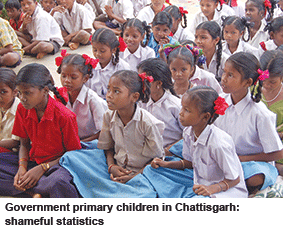
The inevitable outcome of the public sector-led, licence-permit-quota development model is an economy defined by widespread shortages of essential commodities, capital and consumer goods and high inflation. Also inevitably, with shoddy Indian goods unwanted in foreign countries, India, which right until the 19th century dominated international trade (and contributed 20 percent of the global GNP), currently has an ignominious 2 percent share of global trade and a persistent current account deficit.
Post-independence India’s wrong ideological left turn has led to pervasive corruption in government and foreign policy failures which have prompted an arms race and excessive defence spending. Soviet-style adoption of a capital-intensive heavy industry model neglected agriculture and mass poverty and deprivation resulted in steady erosion of institutions of law, order and governance, and fomented caste and creed-based politics which has almost destroyed the fraternal ideal proclaimed in the Constitution.
But as repeatedly argued in the pages of EducationWorld, the most egregious error of successive governments at the Centre and in the states has been under-funding, under-staffing and general neglect of education, particularly early childhood and primary education. Almost half a century ago, the high-powered Kothari Commission (1966) strongly recommended that the annual outlay for public education (Centre plus states) be raised to 6 percent of GDP. But that has never happened with annual national education spending never having exceeded 4 percent of GDP and averaging 3.5 percent.
Against this, global expenditure on education averages 5 percent of GDP with the developed OECD and tiger South-east Asian countries spending 7-10 percent of their (substantially higher per capita) GDP on education. Little wonder contemporary India hosts the world’s largest number of illiterate citizens (over 300 million), and the public school system is a shambles with over half the 230 million children in 1.20 primary government schools dropping out before class VII, and only 30 million completing secondary schooling every year. Further up the education continuum, for the first time this year only two of India’s 800 universities and 35,000 colleges have been included in the World University Rankings of the authoritative London-based company Quacquarelli Symonds. Unsurprisingly, India’s higher education system with an aggregate enrolment of 19 million has not produced a single globally-acclaimed product or process invention.
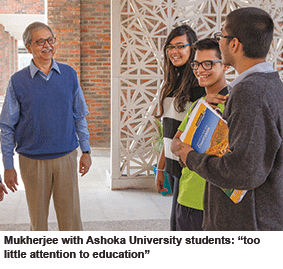 Although these shameful statistics are well-known and often reiterated in the media and EducationWorld, they tend to be dismissed as abstract data in the realm of socio-economics. There’s little awareness within the smug middle class and even in academia, of the extent to which mass illiteracy and sub-standard public primary, secondary and higher education has impacted daily lives and endangered the future of the Republic. For a start, neglect of primary/elementary education is the prime cause of the population tripling during the past six decades, imposing great strain on available resources. There’s no known instance of a substantially literate nation experiencing this rate of population growth.
Although these shameful statistics are well-known and often reiterated in the media and EducationWorld, they tend to be dismissed as abstract data in the realm of socio-economics. There’s little awareness within the smug middle class and even in academia, of the extent to which mass illiteracy and sub-standard public primary, secondary and higher education has impacted daily lives and endangered the future of the Republic. For a start, neglect of primary/elementary education is the prime cause of the population tripling during the past six decades, imposing great strain on available resources. There’s no known instance of a substantially literate nation experiencing this rate of population growth.
Moreover low-quality primary education and consequential low farm productivity in rural India has prompted mass migration into cities, with poor uneducated citizens unaware of basic hygiene and sanitation crowding into slums and shanties. This urban blight is compounded by under-developed town planning and the management ineptitude of insufficiently educated politicians and bureaucrats. Consequently, even as rural India is devastated by low productivity, high-indebtedness and mass farm suicides, the country’s cities are endangered by automobile pollution, archaic garbage disposal systems and power and water shortages.
Contemporary India arguably has the world’s most sickly population with the vast majority of citizens suffering respiratory and viral infections, with the damning statistic that 48 percent of children under-5 are stunted because of malnutrition and abysmal post-natal care routinely brushed under the carpet.
Although the majority of India’s 300 million middle class who foolishly entertain global super-power illusions are unmindful of the connection between education neglect and the failed national development effort, even academics, who thanks to the bounty of myopic Pay Commissions enjoy salaries and perquisites wholly disproportionate to their capabilities, are reluctant to address and debate education reform. However latterly a small but growing number of academics are beginning to acknowledge sustained neglect of public education as the mother cause of the numerous and multiplying ills which have transformed the high-potential Indian Republic into a hopeless also-ran in the global community of nations. 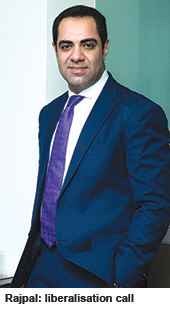
Among them is Dr. Rudrangshu Mukherjee, a history alumnus of Presidency College, Kolkata and Oxford University, author of The 1857 Kanpur Massacres (2007), Penguin Gandhi Reader (1993), and latterly the highly acclaimed Nehru and Bose: Parallel Lives (2014). Currently Mukherjee is incumbent vice chancellor of the privately-promoted, crowd-funded, Ashoka University, Sonepat (Delhi NCR), which has raised high hopes of an overdue revival of intellectual and liberal arts traditions in higher education in India. (see EW cover story January 2015).
Mukherjee professes deep unhappiness with the priorities of the republic which have gone “awry and have been so for a long time”. “Too little attention is paid to education — especially primary education — health and welfare and too much to defence, foreign relations and the god called GDP. Over and above this neglect, there looms over the country the dark shadow of intolerance — intolerance of dissent, of minorities and pluralism,” he laments.
“Education is the bedrock of development, if the term is to be defined in any meaningful way rather than in terms of GDP and the number of billionaires in the country. Immediately after independence, there was a perceived need to develop engineers, technocrats and managers to make the country economically self-reliant. The thrust of the State was to further this aim. Other areas of education were neglected. Later, no adequate steps were taken to correct this emphasis. Also there was the effort to regulate education through bodies like the UGC. The entire structure of education came to be dependent on State funding and patronage. With the deepening of democracy there are more claimants on education — more people see education as their entitlement and rightly so. The State is unable to cope with this need. It neither has the funds nor the will,” explains Mukherjee.
 With the country’s thick-skinned politicians and bureaucrats accustomed to ignoring the dire warnings and reform proposals of intellectuals and academics as “too theoretical”, a refreshing new development is that responding to the needs of edupreneurs pressing ahead with the promotion of private pre-primaries to universities to cater to rising middle class demand for globally-benchmarked education, several transnational management consultancy firms have set up subsidiaries in India, to offer aid and advice to citizens venturing into education spaces despite government obstructionism. Given that the Central and state governments often sign them up for organisational and project management advice, there’s greater likelihood of their opinions on education improvement and development being heeded by education bureaucrats.
With the country’s thick-skinned politicians and bureaucrats accustomed to ignoring the dire warnings and reform proposals of intellectuals and academics as “too theoretical”, a refreshing new development is that responding to the needs of edupreneurs pressing ahead with the promotion of private pre-primaries to universities to cater to rising middle class demand for globally-benchmarked education, several transnational management consultancy firms have set up subsidiaries in India, to offer aid and advice to citizens venturing into education spaces despite government obstructionism. Given that the Central and state governments often sign them up for organisational and project management advice, there’s greater likelihood of their opinions on education improvement and development being heeded by education bureaucrats.
An alum of the Delhi College of Engineering with an MBA from Ann Arbour (Michigan) and former consultant with McKinsey, USA, who returned to India in 2012 to lend his effort to national development, Nikhil Rajpal is currently a partner and head of the education practice of Ernst & Young (India). Although he rues that 21st century India is “way behind” on almost every parameter of national and human resource development, Rajpal is optimistic that a big push towards universalisation of elementary education through “unshackling of private initiatives” can remedy the situation.
“The GER (gross enrolment ratio) in primary schooling has improved dramatically to over 95 percent, but Indian education is still deficient in terms of quality and outcomes across the spectrum. While annual outlays for public education have to increase, it’s even more important that efficiency of expenditure improves. I believe liberalisation of the education sector on the lines of the industry liberalisation and deregulation initiative of 1991 is the best prescription for rapid upgradation of Indian education.
Greater budgetary allocations and expenditure efficiency in public education and encouragement of private initiatives in education across the board, together with substitution of discretionary government controls by light rules-bound regulation, can rapidly improve the abundant human capital stock of the country,” says Rajpal.
Determined private edupreneurs ready and willing to run the bureaucratic gauntlet and obstacle races designed to discourage the promotion of greenfield schools and colleges apart, even if somewhat belatedly, private industry, which is experiencing grave shortages of adequately educated and trained professionals, is increasingly becoming engaged with skills development and higher education. Surprisingly until recently, leaders of Indian industry seemed unaware that India Inc is the greatest casualty of sub-standard graduates that the overwhelming majority of the country’s 800 universities and 35,000 colleges dump into the jobs market. Indeed, India Inc arguably incurs the highest in-service training costs worldwide to transform employees into productive professionals. Major IT software and services companies such as Infosys and Tata Consulting Services maintain massive collegiate-style establishments at considerable expense to get graduates job-ready. According to human resource development managers in corporate India, very few, if any, graduates, even of the country’s globally-famous IITs who demand — and get — huge pay packets, are ready to hit the ground running.
Lately, inspired by the example of chambers of commerce and local industry in Singapore and South Korea becoming involved with syllabus/curriculum formulation often as early as primary education, India’s major chambers of commerce — FICCI, CII and Assocham — are also deepening their involvement with education, especially in skills and higher learning. Shobha Mishra Ghosh, an architecture and urban planning graduate of the J.J. School of Arts, Mumbai and the Institute of Housing & Development Studies, Rotterdam (Netherlands), and currently the Delhi-based senior vice president of FICCI (Federation of Indian Chambers of Commerce & Industry) supervising the education, skills development, health and life sciences portfolio, admits to being “less than happy” with the general condition of the Republic.
“There is huge disparity between the rich and poor and inequality is increasing, rather than abating. Regrettably the political class as a whole has not understood the vital importance of education, health, and hygiene and sanitation for national development. Rising crime and violence, collapsing cities and unkempt public spaces, and lack of national pride are the outcomes of education neglect. After liberalisation of the economy in 1991 and more so in the new millennium, FICCI has deepened its engagement with skills and higher education to improve productivity of Indian industry, especially in medium and small enterprises which employ over 90 percent of the country’s workforce. And in the coming year we intend to become involved with school education,” says Ghosh..gif)
Dr. Parth Shah, an alum of Auburn University and former professor of economics at Michigan University, USA who returned to India in the 1990s and founded the Delhi-based Centre for Civil Society (estb.1999) which has since evolved into India’s top think-tank for education research and advocacy, says that countries which have successfully reformed their education systems, are those which have been successful in building political consensus on the subject. “India’s misfortune has been that no leader has tried to build consensus on education reforms and then implement them consistently and persistently. Today it is rather difficult to build consensus through any education ideology, therefore we must rely on first principles and empirical evidence. Policy needs to be informed by research, however modest it may be. Let’s hope that the imminent New Education Policy focuses on building consensus and then implements the reforms persistently,” says Shah.
Moreover, endorsing the viewpoint expressed by Nikhil Rajpal quoted above, Shah is of the opinion that rather than adequacy of expenditure, the focus should be on expenditure efficiency and transforming Indian education into a learner-centric system.
“It’s not how much we spend on education annually, but how we spend that determines impact. Private household spending on education is almost 2 percent of GDP and rising constantly. If one adds the almost $1 billion per year spent on education abroad, private spending comes close to the annual government outlay. The regulatory system needs to acknowledge this fact and should be designed to enable efficient and effective private and government spending. The first principles of an efficient education system are autonomy, accountability, choice, competition, innovation and collaboration. Also, the education system should work for students and improve their learning outcomes and shouldn’t be designed for the comfort and ideologies of adults. The Right to Education Act pretends to be student centric but actually it works for adults in the system. It needs to be replaced by the Right to Learning or Right to Learning of Choice,” he adds.
 In this connection it is worth recalling the observations made by Nani Palkhivala (1920-2002), India’s most eminent constitutional lawyer who in an epic defence of the Constitution in Keshavananda Bharati’s Case (1973), heard by a full bench of the Supreme Court, successfully argued the proposition that Parliament cannot alter or amend the basic structure of the Constitution, which is settled law today. Moreover Palkhivala was — and remains — the only English-speaking commentator on public policy who could attract a stadium full of citizens when he delivered his annual analysis of the Union budget for over two decades. In a speech delivered 17 years ago, he opined that independent India’s political class committed three great mistakes — all rooted in education neglect — for which the nation is paying a very heavy price.
In this connection it is worth recalling the observations made by Nani Palkhivala (1920-2002), India’s most eminent constitutional lawyer who in an epic defence of the Constitution in Keshavananda Bharati’s Case (1973), heard by a full bench of the Supreme Court, successfully argued the proposition that Parliament cannot alter or amend the basic structure of the Constitution, which is settled law today. Moreover Palkhivala was — and remains — the only English-speaking commentator on public policy who could attract a stadium full of citizens when he delivered his annual analysis of the Union budget for over two decades. In a speech delivered 17 years ago, he opined that independent India’s political class committed three great mistakes — all rooted in education neglect — for which the nation is paying a very heavy price.
According to Palkhivala, newly independent India’s first mistake was to adopt universal adult franchise ab initio. “When the Constituent Assembly was in session, two of our greatest statesmen — C. Rajagopalachari and Sardar Vallabhbhai Patel — recommended that we should not start with adult franchise but educate our people first to make them worthy of discharging their duties as citizens of a great democracy, but they were out-voted,” he observed.
The second great mistake, according to this eminent jurist-economist, was to permit the nation’s population to triple in 50 years “in the absence of any sensible or sound family planning measures and policies”. And the third grave policy planning error was “to pay no attention to education”. “Value-based education has never had any sex appeal in Indian politics. Unlike Lee Kuan Yew who gave education the priority of priorities in Singapore, our political parties treated literacy as a matter of no consequence. The result has been that more than half of our population is literally illiterate. Official statistics give a more comforting figure; but that is only because any person who can write or sign his name is considered to be literate according to official statistics,” said Palkhivala way back in 1999. But few, if any of the great and over-hyped leaders of the nation or the academy paid adequate attention to this extraordinarily erudite jurist and economist, who was dismissed as elitist, and died a frustrated and disillusioned individual over a decade ago.
Now sixty-five years after the Constitution of India was proclaimed with great hopes and aspirations, right-thinking citizens of the endangered Republic need to heed the words of our prophets and savants, which thus far have fallen on stony ground. Leaders and opinion builders in all walks of life need to fearlessly and forthrightly speak up in favour of bridging the national education deficit for nation-building. The alternative is to forever flounder in shallows and misery.